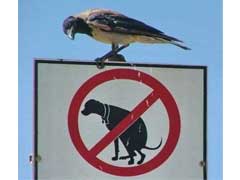Does Bird Poop Damage Your Car Paint? - Vol.77
Now I know this question has been on your mind for some time.
Sure it is an aesthetic nuisance and you should be quick to wipe it off before it hardens and sticks like glue to your vehicle.
You've just spent two hours on a hot, sunny day scrubbing your car down so it shines, when a stupid seagull decides to drop not one but two loads on your car. Ugh...frustrating as it is, that bird poop may be more damaging that you initially thought.

Sure it is an aesthetic nuisance and you should be quick to wipe it off before it hardens and sticks like glue to your vehicle. Contrary to past beliefs, it's not the acid in the bird droppings that damage your vehicle. New research suggests that although the bird droppings themselves don't pose any risk to harming your paint job, when combined with the sun, the story changes. Simply put, when paint warms in the heat and sunshine it naturally expands and softens. When the bird mess is heated it hardens.
Well soon enough the temperature will cool and the paint will contract and harden. When the bird poo is removed it leaves what you might call a permanent 'residue.' The surface where the droppings were isn't as reflectively shiny as the rest of the vehicle. In other words, under close inspection, you will see a difference from where the droppings were and the rest of the car. Now of course you 'really' have to look for this and a 'normal' person would have trouble pinpointing it!
To test this theory, some paintwork was attacked with strongly acidic, neutral and strongly alkali bird dropping substitutes, very very little difference in the 'viewed' damage. But there were apparent differences in the damage to the paint when the substitute bird deposits had differing degrees of liquid-to-grain composition.
A grainier make up made the paint duller or caused light distortion after the paint finished molding around it. Interesting, don't you think?

Research also suggests that putting a special wax on your car to protect from things like acid rain, really won't prevent this from happening. Although it will make it easier to get those dam bird droppings off your car.
It makes sense that the longer you leave the droppings on your car, the more they will be exposed to the bonding heal/cooling cycle and the harder they will adhere to the surface of your vehicle. Hence the longer you leave it, the more it will affect your surface layer.
Here are a few ideas to help with this:
* Have a damp cloth close by for a 'bird-poop' emergency.
* If the mess has hardened don't try and 'scrape' it off, place a wet cloth over it for a few minutes to help loosen it.
* Of course always wash your hands afterwards.
With that said, here are a few more tips on removing those nasty droppings.
* Park in a shady spot
* Don't just try to wipe it off unless it's your only option
* Have no-salt seltzer water in your car. It's just water and carbon dioxide and won't damage your paint.
* If the dropping has been left for awhile, a good paint polish will help repair the damage.
Bottom line is that bird droppings are not good for any vehicle. They look bad, smell bad and can even cause permanent damage if not dealt with immediately.
Now I don't suggest you start becoming obsessed with this because I can guarantee that there will be a time when you either don't notice a bird mess or aren't able to quickly remove it.
The damage is only noticeable if you get out your magnifying glass and look for degrees of shininess. Best thing you can do is just wipe if off if you see it and forget about it!